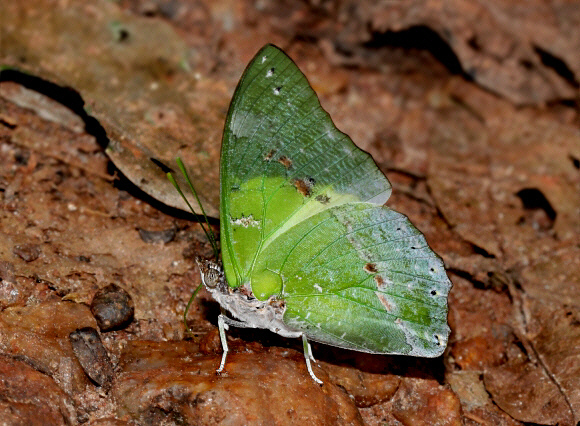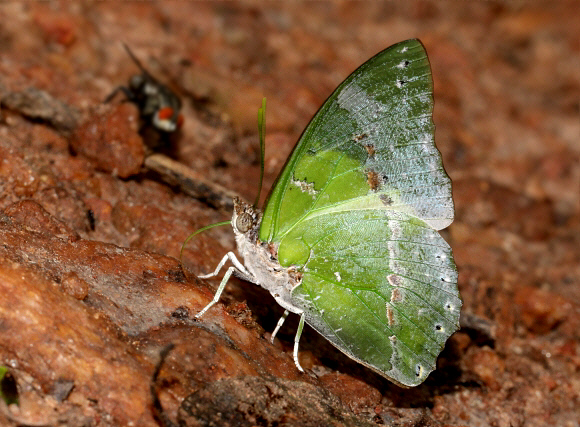
Introduction
The Charaxinae are a group of robust, medium to large Nymphalids characterised by having a rapid and powerful flight, stout bodies, falcate apexes, and a habit of feeding at dung and carrion. They are represented in the neotropics by genera including Consul, Memphis, Prepona and Agrias; in the Oriental and Australian regions by Polyura and Charaxes, and in Africa by Charaxes, Euxanthe and Palla.
There are 179 Charaxes species in the Afrotropical region, one of which – jasius, extends its range as far north as the Mediterranean coast of Europe. Most are forest-dwellers but several are adapted to savannah and arid Acacia thorn scrub habitats.
Charaxes eupale and the near identical species subornatus are both distributed across the African forest zone from Senegal to western Tanzania. The green colouration of their wings, antennae and proboscises are produced by pigments – in most other green butterflies these colours are produced structurally by light refracting from microscopic ridges on the surface of the scales, or from a lattice within them.

Habitats
This species occurs in lowland tropical rainforest at altitudes between sea level and about 800m.
Lifecycle
The egg is barrel-shaped with a series of ridges and keels around the upper part. It is laid singly on leaves of the foodplant. The larva when fully grown is smooth-skinned, green, and marked with a pair of ocelli half way along the back. It has a large head adorned with a pair of recurved horns. The larval foodplants are Albizia ( Leguminosae ) and Scutia ( Rhamnaceae ).
Adult behaviour
Both sexes spend much of their lives high in the forest canopy, but males are regularly encountered at ground level. They are usually seen singly or in two’s and three’s, but I have heard reports of as many as 30 attending monkey droppings on a forest track.
More often they are found as singletons amidst mixed aggregations with other Charaxes species, imbibing fluids from carrion, mammalian dung, bird droppings or urine-soaked soil. Both sexes also feed occasionally at sap runs on trees, or at rotting fruit.
The butterflies have serrated leading edges to the forewings, which are used to jostle and “elbow” other butterflies when feeding at carrion or dung. The serrations also act to strengthen the wings, which in combination with the powerful thoracic muscles provide the means to propel the butterflies with great speed and agility.

